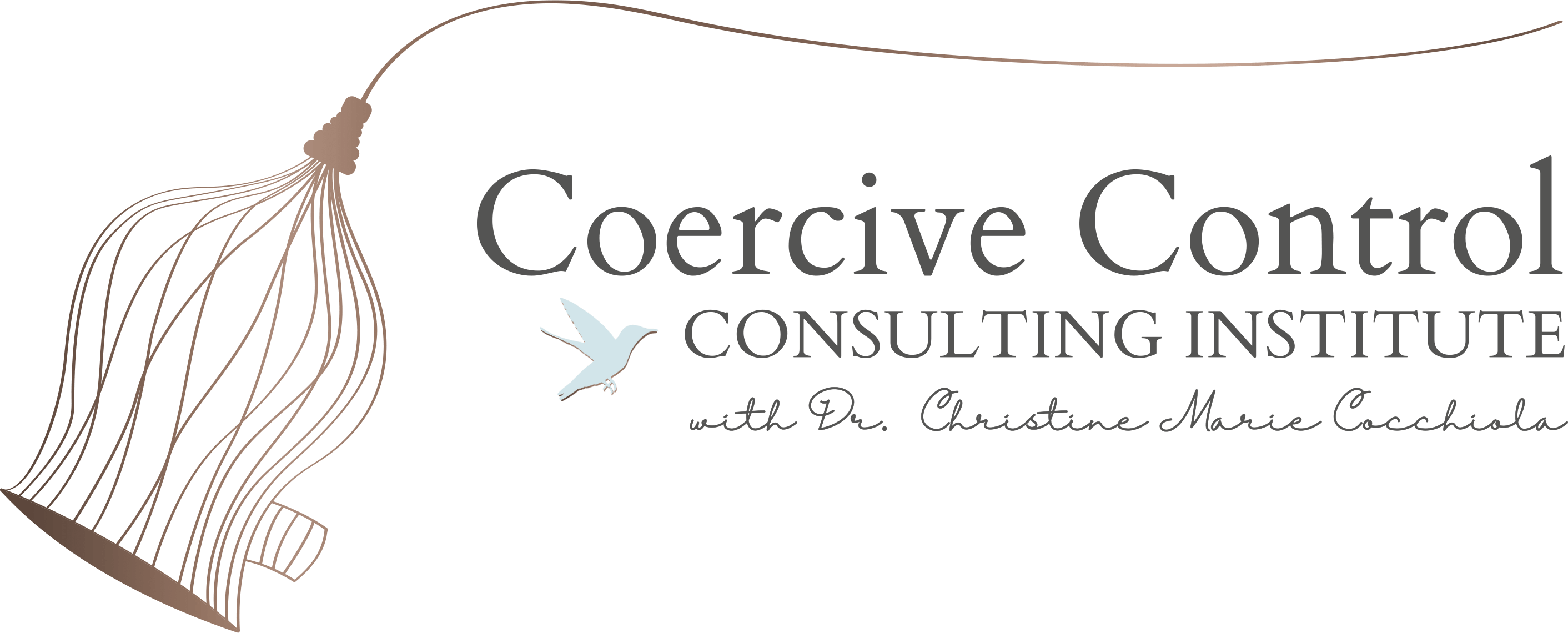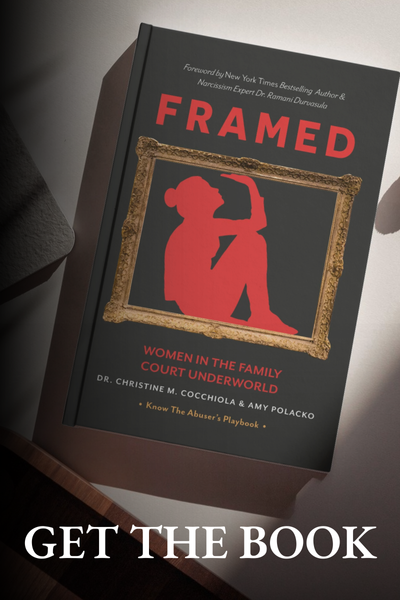Welcome, Professionals.
We are building a SEA of ALLIES who are dedicated to protecting children and keeping them safe in the care of their protective parents.
Available Certifications
2 Day Live Virtual Certification Training for Clinicians, Attorneys, & Coaches
Are you a Clinician, Attorney, or Coach seeking enhanced knowledge and certification? Enhance your knowledge to support victims-survivors of coercive control in this research based 1.5 or 2-day training. Are you an Attorney or a Coach? Then choose Part 1 of the training and gain knowledge over 1.5 days. Clinicians earn 14 CEU's for the 2-day training and may then be listed in the Coercive Control Institute Clinician Directory.
6+ hours Self-Study Training for Clinicians, Attorneys, & Coaches
Are you a Clinician, Attorney, or Coach seeking enhanced knowledge to support victims-survivors (adults and children) of coercive control? Then this research based 6+ hour training is for you! Part 1 is for Attorneys & Coaches and Part 1 & 2 for Clinicians. There are no CEU's, however participants receive a Badge noting their completion of the training.

Additional Classes
3 Half Day Trainings Including a Writing Workshop for Completing Court Evaluations
We need expert witnesses in family courts to support victims and survivors of coercive control. Dr. Fontes is very experienced and certified in many states as an expert witness. She can guide you how best to serve your clients and the family court system.
2.5 Hour Class for Attorneys, Advocates, & Professionals in the Family Court System
Master Class for Court Professionals is a 2.5 hour MASTER CLASS intended to succinctly educate those working in the judicial system, specifically, the family court system. Coercive Control IS the foundation of all domestic abuse.
Other Peer-Reviewed Articles
- Barnett, O. W. (2000). Why battered women do not leave, part 1: External inhibiting factors within society. *Trauma, Violence, & Abuse, 1*(4), 343-372.
- Boland, S., & Brassard, M. R. (2011). Psychological maltreatment of children and youth. In J. E. B. Myers (Ed.), *The APSAC Handbook on Child Maltreatment* (3rd ed., pp. 3-24). Thousand Oaks, CA: Sage Publishing.
- Brassard, M. R., & Donovan, K. L. (2006). Defining psychological maltreatment. In M. M. Feerick, J. F. Knutson, P. K. Trickett, & S. M. Flanzer (Eds.), *Child abuse and neglect: Definitions, classifications, and a framework for research* (pp. 3-27). Baltimore, MD: Paul H Brookes Publishing Co Inc.
- Buel, S. (n.d.). 50 obstacles to leaving.
- Cattagni Kleiner, A., & Romain-Glassey, N. (2018). How the current management of intimate partner violence can endanger victimized mothers and their children. *Violence Against Women, 24*(2), 200-223.
- Child Abuse Review. (2010). *Vol. 19: 5-20*. Published online 14 October 2009 in Wiley InterScience. (1) (2)
- Ciurria, M. (2018). The loss of autonomy in abused persons: Psychological, moral, and legal dimensions. *Humanities, 7*(2), 1-19. (1)(2)
- Coulter, M. L., & Mercado-Crespo, M. C. (2015). Co-occurrence of intimate partner violence and child maltreatment: Service providers’ perceptions. *Journal of Family Violence, 30*(2), 255–262. (1)(2)
- Flood, M. (2012). Separated fathers and the ‘fathers’ rights’ movement. *Journal of Family Studies, 18*(2-3), 235-345. (1)(2)
- Fontes, L. (2015). *Invisible chains: Overcoming coercive control in your intimate relationship*. New York, NY: Guilford Press.
- Friedman, M. (2003). *Autonomy, gender, politics*. Oxford: Oxford University Press.
- Gardner, R. A. (1992). *True and false accusations of child sex abuse*. Cresskill, NJ: Creative Therapeutics.
- Grey, R. (2023). “Catastrophic”: A qualitative exploration of survivors’ experiences of expert instruction in private law child arrangements proceedings. *Journal of Social Welfare and Family Law, 45*(4), 344-362.
- Hall, C. (2020). Analysis of intimate partner violence testing instruments.
- Hart, S. N., Brassard, M. R., Binggeli, N. J., & Davidson, H. A. (2002). Psychological maltreatment. In J. E. B. Myers, L. A. Berliner, J. N. Briere, C. T. Hendrix, T. A. Reid, & C. A. Jenny (Eds.), *The APSAC Handbook on Child Maltreatment* (pp. 79–104). Thousand Oaks, CA: Sage Publications.
- Herman, J. L. (2023). *Truth and repair: How trauma survivors envision justice*. New York, NY: Basic Books.
- Hester, M., & Eriksson, M. (2006). The justice system as an arena for the protection of human rights for women and children experiencing violence and abuse. *Academia.edu*.
- Katz, E., Nikupeteri, A., & Laitinen, M. (2020). When coercive control continues to harm children: Post-separation fathering, stalking, and domestic violence. *Child Abuse Review, 29*, 310–324.
- Katz, E. (2023, October 23). Decoding coercive control with Dr. Emma Katz. From ‘Parental Alienation’ to (Abusers’) Child and Mother Sabotage.
- Lohmann, S., Cowlishaw, S., Ney, L., O’Donnell, M., & Felmingham, K. (2023). The trauma and mental health impacts of coercive control: A systematic review and meta-analysis. *Trauma, Violence, & Abuse*, 1-31.
- Love Language Quiz. (n.d.). [What’s Your Love Language].
- Meier, J. S. (2020). U.S. child custody outcomes in cases involving parental alienation and abuse allegations: What do the data show? *Journal of Social Welfare and Family Law, 42*(1), 92-105.
- Myhill, A., & Hohl, K. (2016). The “golden thread”: Coercive control and risk assessment for domestic violence. *Journal of Interpersonal Violence, 34*. (1)(2)
- Nicholson, S. B., & Lutz, D. J. (2017). The importance of cognitive dissonance in understanding and treating victims of intimate partner violence. *Journal of Aggression, Maltreatment & Trauma, 26*(5), 475-492.
- Orr, K., Sheeran, N., & Douglas, H. (2023). The psychological impact on mothers who have experienced domestic violence when navigating the family court system: A scoping review. *Psychiatry, Psychology and Law*, 1-12.
- Patriarchy: Theoretical Postulates and Empirical Findings. (2009). *Sociological Bulletin, 58*(2), 253-272.
- Pingley, T. (2018). The impact of witnessing domestic violence on children: A systematic review. *Children and Youth Services Review, 94*, 12-20.
- Price, L. (2014). Critical realist versus mainstream interdisciplinary. *Journal of Critical Realism, 13*(1), 52-76.
- Rafaeli, E., Bernstein, D. P., & Young, J. (2011). *Schema therapy: Distinctive features*. New York, NY: Routledge/Taylor & Francis Group.
- Renner, L. M., & Slack, K. S. (2006). Intimate partner violence and child maltreatment: Understanding intra- and intergenerational connections. *Child Abuse & Neglect, 30*(6), 599-617. (1)(2)
- Romero, A., & Staudenraus, M. (2023). Experiences of intimate partner violence victims: Continued abuses during and after litigation. *Journal of Family Trauma, Child Custody & Child Development*, 1-14.
- Sarkis, S. (2018). *Gaslighting: Recognize manipulative and emotionally abusive people — and break free*. New York, NY: De Capo Lifelong Books.
- Sharma, S. R., Gonda, X., Dome, P., & Tarazi, F. I. (2020). What’s love got to do with it: Role of oxytocin in trauma, attachment and resilience. *Pharmacology & Therapeutics, 214*, 107602. (1)(2)
- Sharp-Jeffs, N., Kelly, L., & Klein, R. (2017, February 2). Long journeys toward freedom: The relationship between coercive control and space for action— Measurement and emerging evidence. *Journal of Violence Against Women, 24*(2), 163-185. (1)(2)
- Silberg, J., & Dallam, S. (2018). Abusers gaining custody in family courts: A case series of overturned decisions. *The Leadership Council on Child Abuse & Interpersonal Violence*.
- Spearman, K. J., Hardesty, J. L., Campbell, J., & Vaughan-Eden, V. (2024). Post-separation abuse: A literature review connecting tactics to harm. *Journal of Family Trauma, Child Custody & Child Development*, 1-13.
- Stark, E. (2007). *Coercive control: How men entrap women in personal life*. New York, NY: Oxford University Press.
- Stark, E. (2012). Re-presenting battered women: Coercive control and the defense of liberty. In *Violence Against Women: Complex Realities and New Issues in a Changing World*. Les Presses de l’Université du Québec. Rutgers School of Public Affairs and Administration. (1)(2)
- Stark, E. (2021, January). Personal communication [Personal interview].
- Walby, S., & Towers, J. (2018). Untangling the concept of coercive control: Theorizing domestic violent crime. *British Journal of Criminology, 58*(2), 391-410.
- Weitzman, S. (2001). *Not to people like us: Hidden abuse in upscale marriages*. New York, NY: Basic Books Publishing.
- Young, J. E., Klasko, J. S., & Weishaar, M. E. (2003). *Schema therapy: A practitioner’s guide*. New York: Guilford Press.
- Young, J. E., & Klasko, J. S. (1993). *Reinventing your life*. New York, NY: Penguin Group.
- Young, J. (2012). [Schema Therapy]
- Kerig, P. K. (n.d.). (1)(2)
- How domestic violence batterers use custody proceedings in family courts to abuse victims, and how courts can put a stop to it. (n.d.). (1)(2)
- For the sake of the children: The law, domestic violence and child contact in England by Marianne Hester.
- Harsey, S. & Freyd, J.J. (2022) Defamation and DARVO [Editorial]. Journal of Trauma & Dissociation, 23, 481-489, DOI: 10.1080/15299732.2022.2111510 (free access)
- E. Dalgarno, E. Katz, S. Ayeb-Karlsson, A. Barnett, P. Motosi & A. Verma (14 Dec 2023): ‘Swim, swim and die at the beach’: family court and perpetrator induced trauma (CPIT) experiences of mothers in Brazil, Journal of Social Welfare and Family Law, DOI: 10.1080/09649069.2023.2285136- Dixon. L., Hamilton-Giachritsis, C., Browne, K.D. & Ostapuik, E. (2007). The co-occurrence of child and intimate partner maltreatment in the family: Characteristics of the violent perpetrators. Journal of Family Violence, 22, 675-689
- Co-Occurrence of Intimate Partner Violence and Child Abuse in Hong Kong Chinese Families. DOI: 10.1177/0886260510369136
- Nott, D., & Walker, B. R. (2021). The Dark Tetrad in the prediction of self-reported and behavioural risk-taking. Australian Journal of Psychology, 73(4), 569–577.
- Highlights of Jennifer's Law. (1)(2)
- Gómez-Leal, R., Fernández-Berrocal, P., Gutiérrez-Cobo, M.J. et al. The Dark Tetrad: analysis of profiles and relationship with the Big Five personality factors. Sci Rep 14, 4443 (2024). https://doi.org/10.1038/s41598-024-55074-w
- Grip, K. (2012). The damage done: Children exposed to intimate partner violence and their mothers—Towards empirically based interventions in order to reduce negative health effects in children (Doctoral dissertation). University of Gothenburg. Printed by Ale Tryckteam. ISBN: 978-91-628-8527-4. ISSN: 1101-718X. ISRN: GU/PSYK/AVH--265—SE. Available at http://hdl.handle.net/2077/30153
- Lux, G., Beltrano, N., & Archer-Kuhn, B. (2024). Prioritizing safety in family law: A stage-gating approach to domestic violence and parent-child contact problems. Journal of Family Trauma, Child Custody & Child Development, 1–29. https://doi.org/10.1080/26904586.2024.2431696

